Biden must mount campaign against right-wing extremists, says Berkeley expert
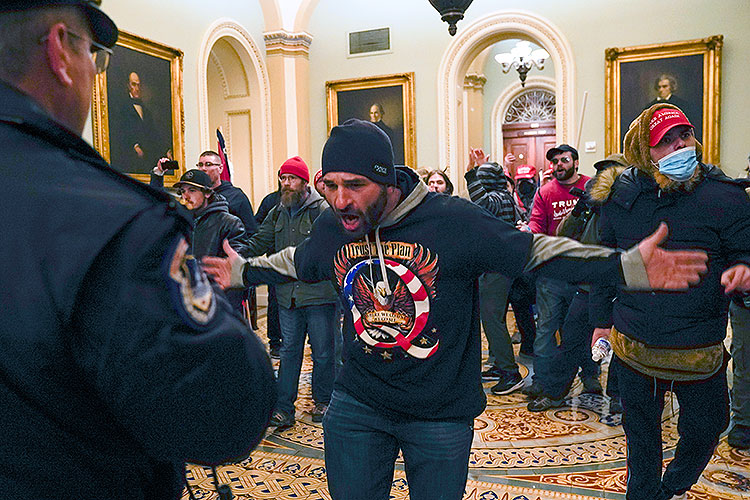
Americans, and people across the world, watched in shock and alarm yesterday as hundreds of right-wing extremists stormed the U.S. Capitol while Congress was certifying the Electoral College votes that produced a victory for Democrat Joe Biden and a defeat for President Donald Trump. But no one should have been surprised, says Lawrence Rosenthal, head of the Center for Right-Wing Studies at UC Berkeley.

Rosenthal, an expert in the U.S. militia movement, said that members of right-wing extremist groups in the U.S. found an ally in Trump and have thrived during his presidency, despite a severe setback during the violent 2017 “Unite the Right” rally in Charlottesville, Virginia.
Last year, the Department of Homeland Security called white supremacy groups “the most persistent and lethal threat” against national security.
And yet Trump has continued to welcome the support of white nationalists and anti-government extremists, Rosenthal said. And, he predicted, they could continue to build power unless the Biden administration mounts an intensive law enforcement campaign against them.
“Biden needs to come down heavily on these characters,” he said. “He needs everybody who was in the Capitol building yesterday to be arrested and prosecuted.
“These guys … believe that the liberal world is weak and flabby, and that they are the real tough guys. And when that gets shoved back in their face, they tend to scurry away. Biden has to turn loose his Justice department to do that.”
[The interview has been lightly edited for length and clarity.]
Berkeley News: Looking at the extraordinary events in Washington yesterday, how would you characterize what’s happened?
Lawrence Rosenthal: I don’t know how people could be surprised. It’s been telegraphed and telegraphed and telegraphed — it’s like what happened in Charlottesville in 2017 has now come to Washington.
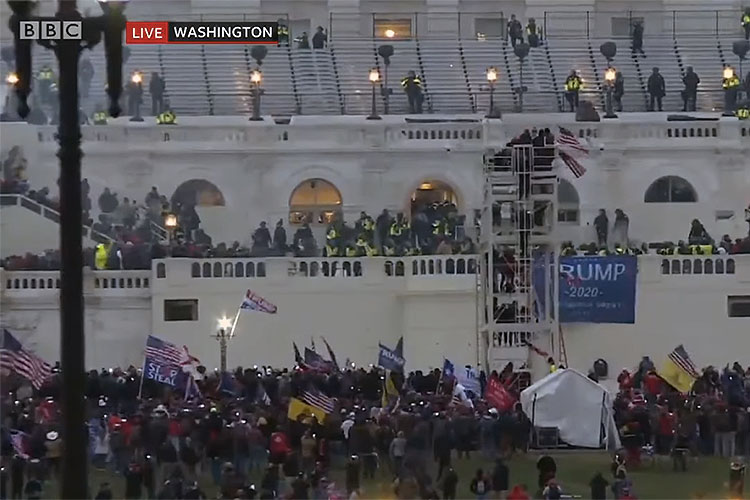
There is a historical precedent to what happened, and that historical precedent is known as the March on Rome.
The March on Rome was what put Mussolini in power in 1922 in Italy. It was the occasion on which a new government was going to be installed. The king was to offer to a parliamentarian the opportunity to form a government, sort of like the queen does today in England.
Mussolini had thousands of followers who had established themselves as militiamen, Blackshirts, and he had thousands of them descend on Rome and intimidate the king and the Parliament into offering him the government.
By putting lots of people in the street, like Trump, he was attempting to affect or influence the choosing of the head of state.
But there are two differences between Washington now and the historical precedent in Italy.
One is that Mussolini’s gambit worked, and Trump’s gambit was never going to work. The second is, when Mussolini first addressed the Italian Parliament after he became prime minister, he famously said something along the lines of, ‘If I wanted to, I could have filled this gray chamber with my troops, who would follow my every command. For now, I choose not to.’ So, he did not fill the Parliament with his followers, but Trump did.
The restraint that Mussolini had was not in evidence yesterday, but the political triumph of Mussolini was not achieved by Donald Trump.
How would you characterize the people who attacked the U.S. Capitol in Washington?
The militia side of America, the right wing militia side of America, in 2017 was known by the phrase alt-right, and in 2020, it has had a resurrection. That has occurred after three different events.
The first one was the anti-lockdown demonstrations after the start of the coronavirus pandemic. The second was the police killing of George Floyd in Minnesota, and the subsequent demonstrations. And the third one was the election and the ‘stop the steal’ demonstrations demanding that Trump be declared the winner.
The militia movement has come back, not so as the alt-right, but as this ensemble of boogaloo — boogaloo, meaning civil war. So, you have the Proud Boys and the Boogaloo Bois, the Oath Keepers and others.
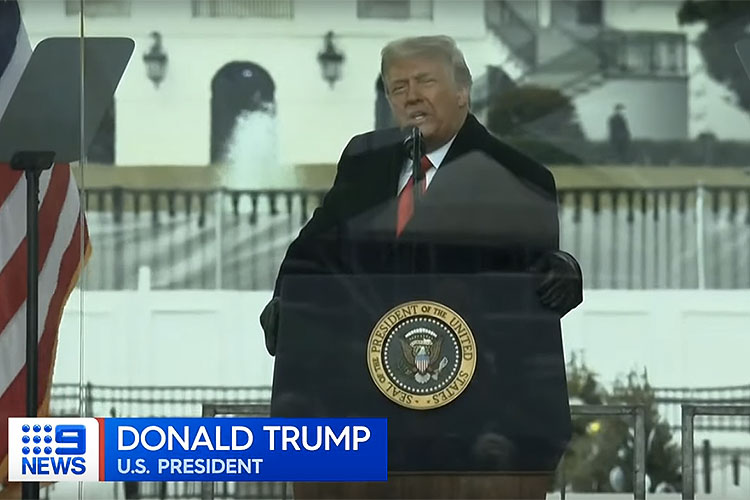
When Trump debated Joe Biden in September, they clearly indicated that when Trump gives an order, they respond. Trump was asked to condemn this extremism, and he said, ‘Stand back and stand by.’ And the Proud Boys, immediately after, said ‘Yes, sir.’
Now, they were told to show up in Washington — they’ve been told that for weeks now by Trump. And they listened.
It’s like what they did in Michigan, when they took over the Michigan Legislature. Except that in Michigan, an open carry state, they had their automatic weapons with them. Washington, D.C., does not allow open carry, and that’s really significant.
Within the past few years, research has suggested that nearly 6% of Americans share views consistent with the alt-right worldview. By one account, this total might reach 11 million people. You explored this universe in Empire of Resentment, a book that came out last year. Based on your research, what motivates the Proud Boys and the Oath Keepers and the people who stormed the U.S. Capitol yesterday?
There are two wellsprings of American militias. One is white nationalism, and the other is anti-government hostility. The anti-government example is Timothy McVeigh (mastermind of the 1995 bombing of an Oklahoma City federal building that left 168 dead and 680 injured). An example of white nationalism is Dylann Roof (convicted of killing nine people in 2015 at a historically Black church in Charleston, S.C.).
What we’ve had are one-off events by each current, hoping that it would set off or be the stimulus for the civil war, for the thing that is adumbrated in The Turner Diaries (a novel that some see as a handbook for a white nationalist, anti-government revolution).
Each of these factions, white nationalist and anti-government, see in Trump what they want to see, which is someone who speaks their language and is sympathetic to them.
And Trump said something interesting in regard to QAnon, the right-wing conspiracy movement. Trump was asked about them, and he said, ‘Well, they like me.’ And that’s his only criterion for all these guys. If they like him, then they’re ok.
Even in his statement yesterday asking the rioters to go home, he said, ‘We love you.’ So, these people who used to be completely on the fringe in America, have now developed a relationship with a leading political figure along the lines of the leadership principle, which emerged with fascism in the 20th century.
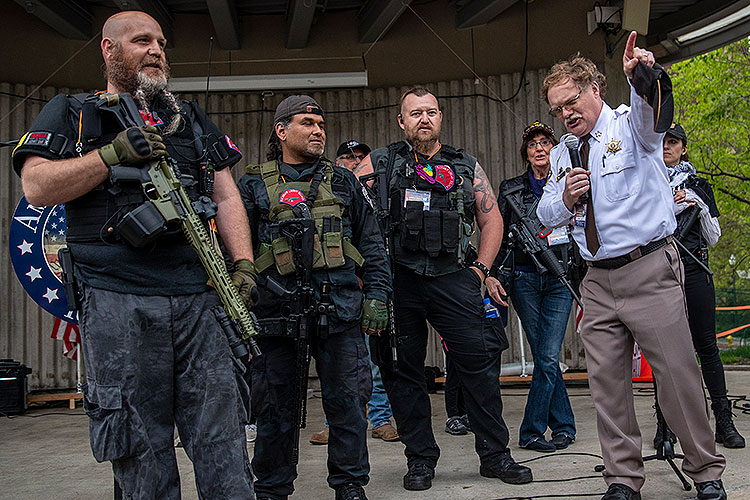
Last October, after the arrest of right-wing extremists who were plotting to kidnap Michigan Gov. Gretchen Whitmer, you suggested that this movement was driven, in part, by a rebellion ‘fantasy.’ And the question you posed was: How far they would push it?
Now, we see that they’ve pushed it pretty far. But it’s really important to understand they pushed it really far following the commands of Trump, as their commandante-in-chief. He told them to show up, and he told them that it should be ‘wild.’
In considering these extremists’ motivation, there is a constant question: Is their rebellion driven by economic dislocation? By racial hostility?
I think that it’s more cultural than economic. There is a sense of being displaced culturally, which is the strongest thing, especially among the white nationalists.
The anti-government people have their own prehistory, which often gets really complicated. They say things like, ‘We are independent, sovereign citizens, and we do not have to listen to the government.’ You see that when the far-right group took over the Malheur National Wildlife Refuge in Oregon.
The idea of a lockdown to control the pandemic bothers the anti-government populists across the board. It goes right to their core issue: We’re being told what to do by these people who don’t have any right to do it. And they’re doing it so that we become slaves.
On the white nationalist side, the ‘Unite the Right’ rally in Charlottesville goes to the point: They were chanting, ‘You will not replace us,’ which is characteristic of the extreme anti-immigrant right here and in Europe. That then becomes a racial resentment, the sense that white people are threatened with displacement. And they also had a chant, ‘Jews will not replace us.’ So, some large proportion of those guys are also steeped in a kind of Nazi worldview.
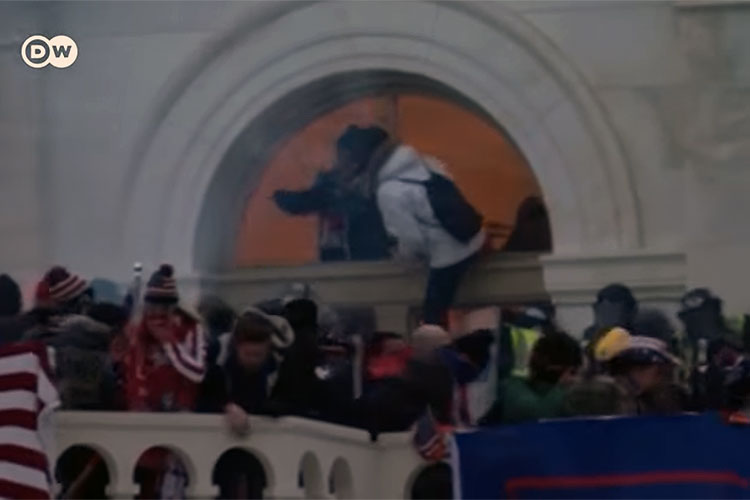
If the mob that stormed the Capitol yesterday had been people of color, would the official response, the law enforcement response, been different?
There’s a mitigating factor that sets Washington, D.C., apart from almost all other locations in the U.S.
It is a majority Black place. The chief of police is Black, the mayor is Black. So, the danger that Black people would have to face from the municipal authorities might be a lot less than what one finds in Minneapolis or Kenosha or other places that have recently experienced police violence against Black people.
The reinforcements with the National Guard coming in from Maryland and Virginia, it is not unreasonable to speculate — and I emphasize the word speculate — that if these had been Black people, the use of force based on what people looked like might’ve been much, much greater.
If we assume that Joe Biden will be inaugurated on Jan. 20, what’s next for this extremist movement?
It depends on Joe Biden. In my view, these people can get beaten back by serious counter measures. Biden needs to come down heavily on these characters. He needs everybody who was in the Capitol building yesterday to be arrested and prosecuted. His message is, ‘We have to heal and bring the country together’ — he can say all that he wants, but if he doesn’t go after these people severely, they will thrive.
They will diminish if faced with really serious law enforcement.
Sustained over time?
It will have to be sustained, but there has to be an immediate impact. These guys thrive in the absence of counterforce. They really believe that the liberal world is weak and flabby, and that they are the real tough guys. And when that gets shoved back in their face, they tend to scurry away. Biden has to turn loose his Justice department to do that.
It will be hard. You know, after the Civil War was lost by the South, you had the rise of a myth that was called the Lost Cause. That myth animated people for decades and decades. These guys in the boogaloo movement now have a parallel potential myth: the stolen election.
Now, they have something to motivate them beyond their ordinary grievances, and so the need to bring power to bear against them is yet more crucial — and it has to happen straightaway.
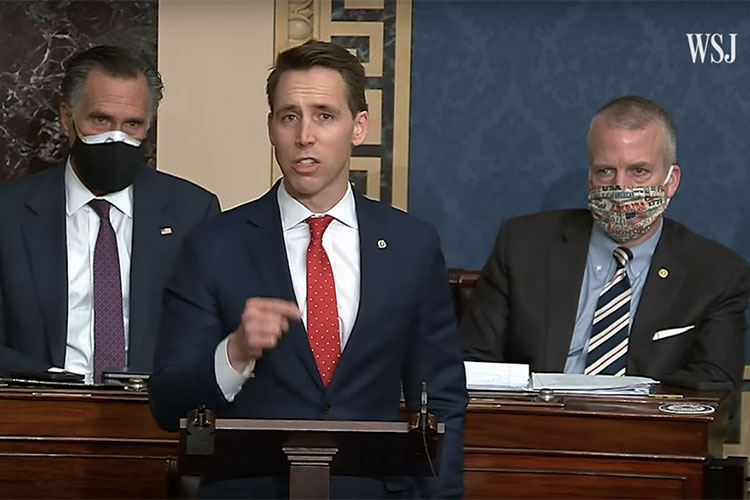
You’ve said that Donald Trump is acting as the ‘commandante’ of this movement, and in recent weeks we’ve seen various Republicans in Congress — Senators Ted Cruz of Texas and Josh Hawley of Missouri, for example — join him in aggressively attacking the credibility of the election. Do you think yesterday’s events will damage the political strength and credibility of this right-wing movement?
We’ll see — and we’ll see it fairly soon. Here’s what the Trumpists and others on the right wing are going to say: ‘What about all the Black Lives Matter stuff last summer? What about them burning cities? What about when they tried to burn down the church on Lafayette Square (in Washington)?’
What they will try to do is make this event an equivalency with antifa and Black Lives Matter, attacking them essentially as Trump did in his campaign: ‘They are going to destroy our cities, and they’re going to come after your daughters. And the only thing that stands between you and them is me and our guys on the street.’
We had two remarkable events yesterday: Not just the mob storming the Capitol, but also in Georgia, a bastion of the Old South, a Black man and a young white man, both Democrats, were elected to the U.S. Senate. Is it possible that 100 years from now this day will be seen as a historic turning point?
I really don’t know. All of my adult life, I’ve heard the news about the rise of the New South. Or in 2008 or 2012, how the Republican Party was going to collapse unless they have an opening to Latinos and so forth. And those predictions — or famous predictions of the emerging Democratic majority — haven’t panned out in the way that a lot of people expected in the enthusiasm of the moment.
